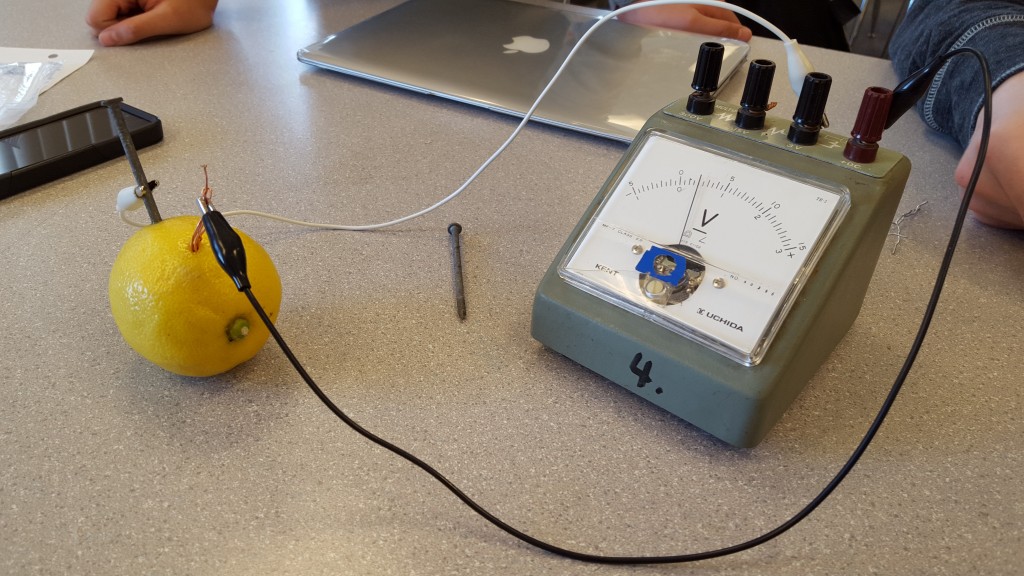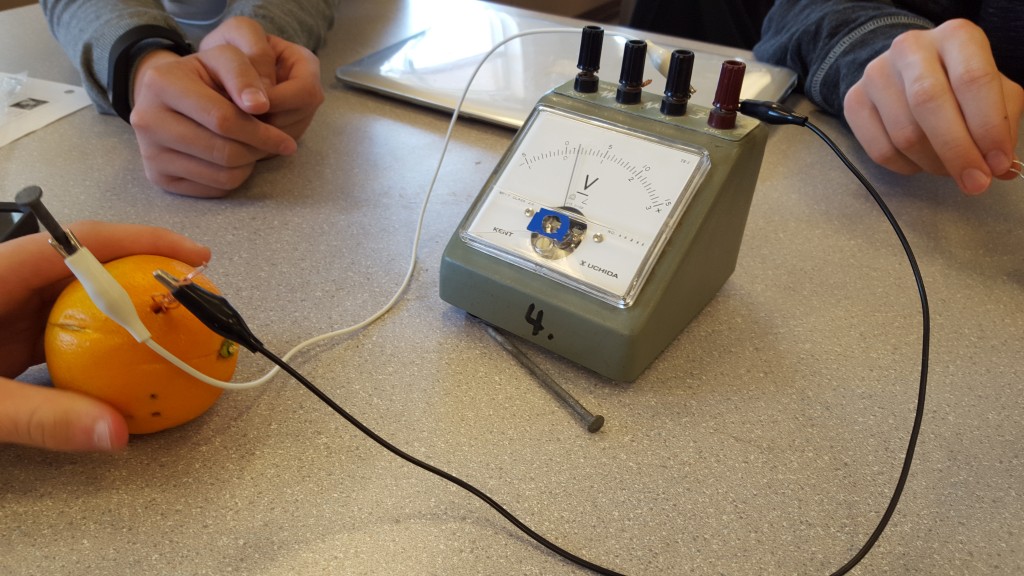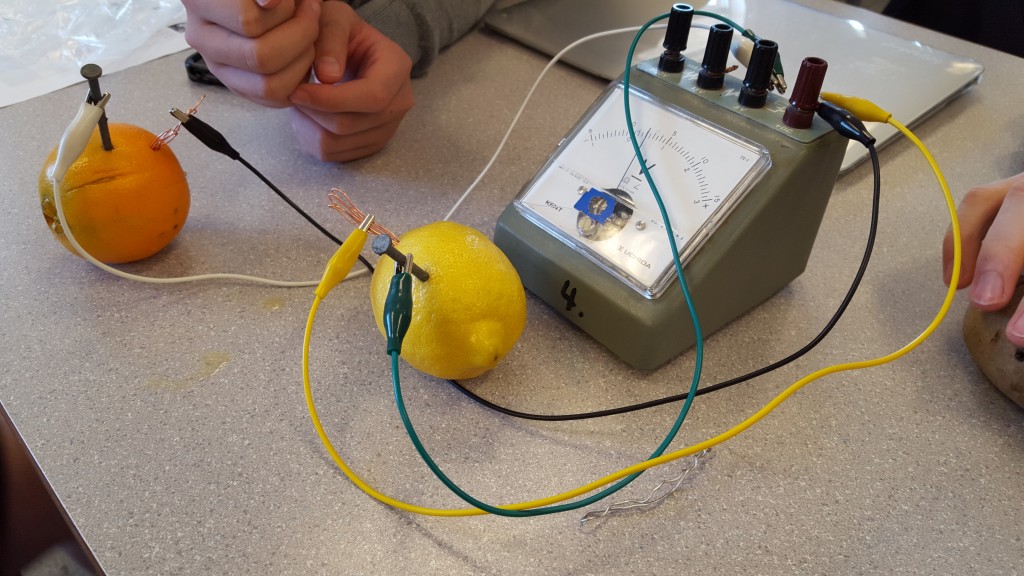1. Prediction: Potato will produce the most electric voltage because the juice from the potato will help to make a electric charge
2. Materials : Potato, Lemon, Orange, Voltmeter, 2 steel nails, 2 copper wires, 4 aligator clips, Miniature bulb
3. Procedure :
a) Insert 1 steel nail and 1 copper wire to the potato
b) Use 2 aligator clips to connect steel nail and copper wire to the voltmeter
c) Exchange the voltmeter to miniature bulb. See if the bulb lights up.
d) Record the results
e) Try lemon and orange with the same procedure
4. Results :
Potato : 1.5 voltes, didn’t turn bulb on
Lemon : 2 voltes, didn’t turn bulb on
Orange : 1.5 voltes, didn’t turn bulb on
5. Advanced Experiment :
Use both fruits, orange and lemon at the same time. Use 2 steel nails and copper wires. Connect the two fruits and the voltmeter with 4 aligator clips. Try the minature bulb to see if it lights up.
6. Result of Advanced Experiment :
Orange and Lemon : 3 voltes, didn’t turn bulb on
7. Observations :
- It was 0 voltes when our group inserted 2 steel nails in one fruit
- We should have checked if the light bulb actually turns on by a battery
- It would have been better if we had more time to try other fruits or vegetables
8. Questions :
If your bulb doesn’t glow, how can you find out if electrons are flowing? I can use a voltmeter to find out if electrons are flowing.
If your bulb doesn’t glow, why not? It might not have the power to light up the bulb.
What is causing electrons to flow in this experiment? The aligator clips allows electrons to flow.
How can I use this in my everyday life? I can use this when power goes out.
9. Conclusion : My prediction was incorrect. Lemon produced the most electric voltage.



